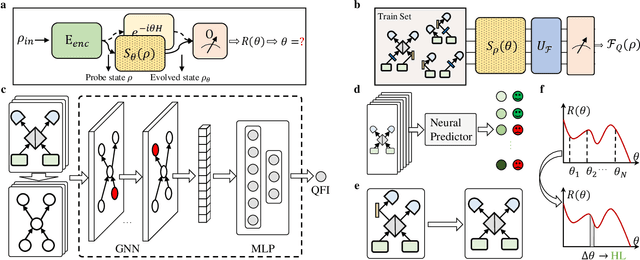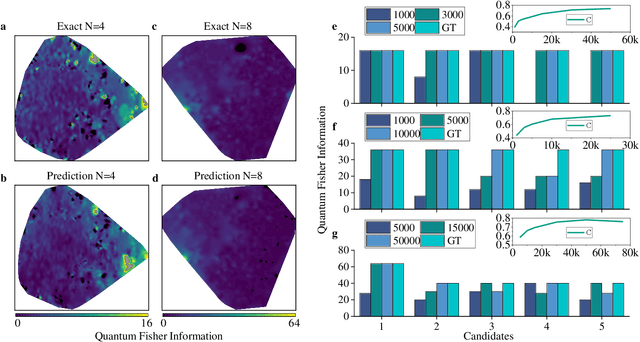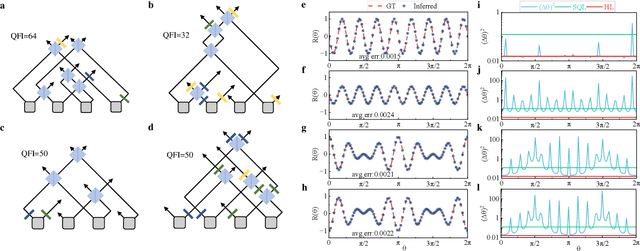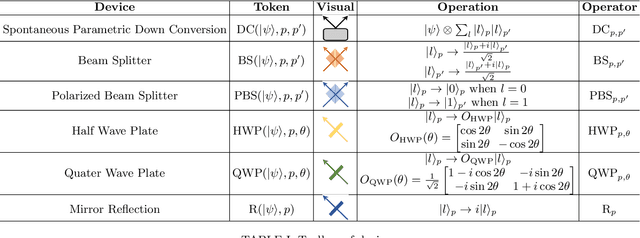Optical Quantum Sensing for Agnostic Environments via Deep Learning
Paper and Code
Nov 13, 2023



Optical quantum sensing promises measurement precision beyond classical sensors termed the Heisenberg limit (HL). However, conventional methodologies often rely on prior knowledge of the target system to achieve HL, presenting challenges in practical applications. Addressing this limitation, we introduce an innovative Deep Learning-based Quantum Sensing scheme (DQS), enabling optical quantum sensors to attain HL in agnostic environments. DQS incorporates two essential components: a Graph Neural Network (GNN) predictor and a trigonometric interpolation algorithm. Operating within a data-driven paradigm, DQS utilizes the GNN predictor, trained on offline data, to unveil the intrinsic relationships between the optical setups employed in preparing the probe state and the resulting quantum Fisher information (QFI) after interaction with the agnostic environment. This distilled knowledge facilitates the identification of optimal optical setups associated with maximal QFI. Subsequently, DQS employs a trigonometric interpolation algorithm to recover the unknown parameter estimates for the identified optical setups. Extensive experiments are conducted to investigate the performance of DQS under different settings up to eight photons. Our findings not only offer a new lens through which to accelerate optical quantum sensing tasks but also catalyze future research integrating deep learning and quantum mechanics.
 Add to Chrome
Add to Chrome Add to Firefox
Add to Firefox Add to Edge
Add to Edge